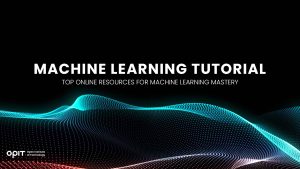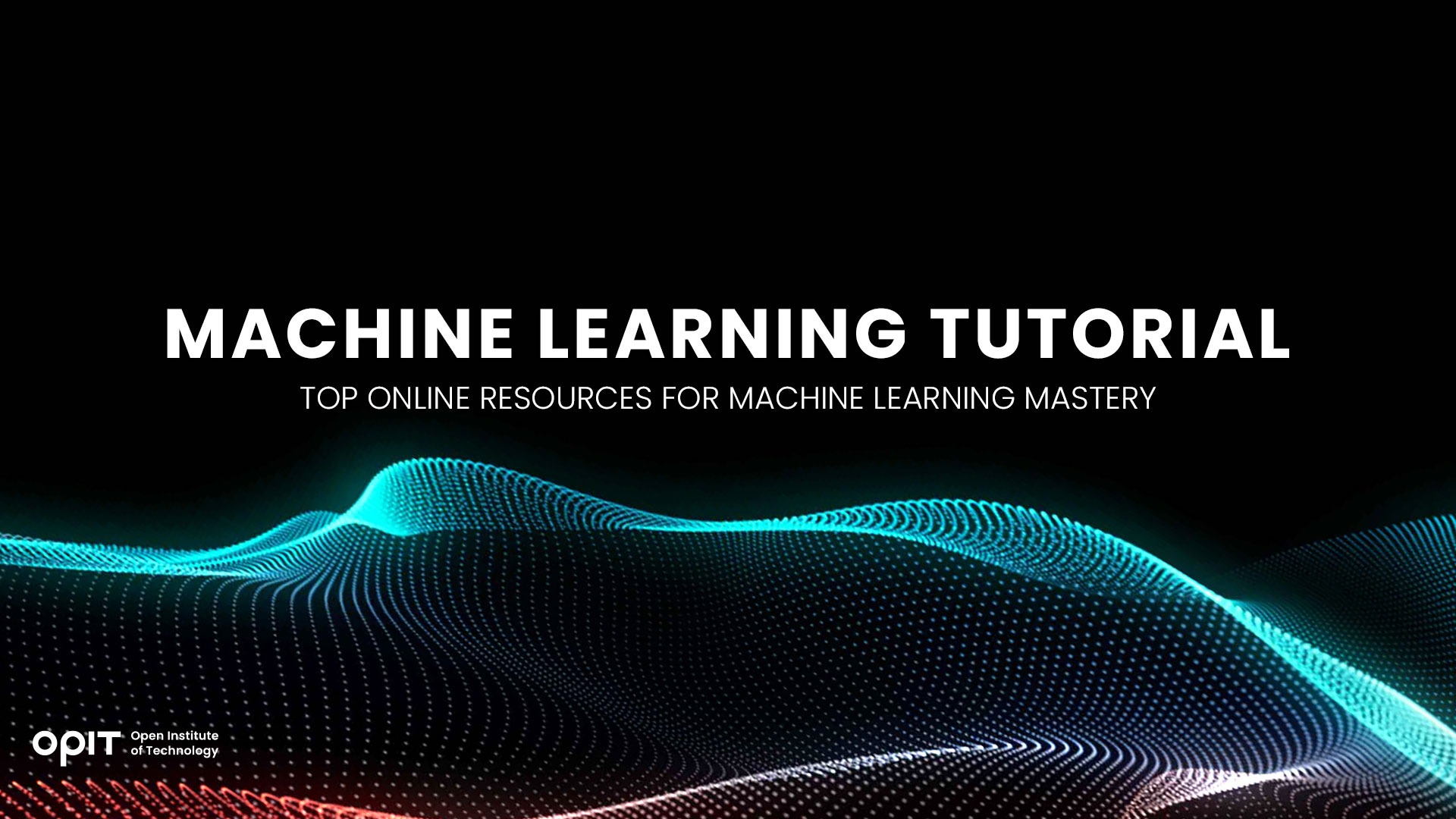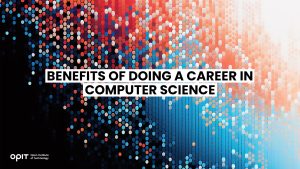

It can often feel like a computer has a “brain,” especially given modern machines’ abilities to run complex calculations and handle instructions. But all of those machines need people behind them to program algorithms and help them to learn based on explicit instructions. That’s where machine learning comes in.
This branch of artificial intelligence brings a machine’s “brain” closer to the real thing than ever before. It’s all about teaching the machine how to do more than simply execute, as machine learning is all about making a machine “think” (based on instructions and algorithms) so it can improve over time. That ability to “think” is crucial in modern business because it gives companies the ability to analyze patterns – both operational and consumer-based – enabling them to make smarter decisions.
But these businesses need people who understand how to create machine learning models. That’s where you come in. With the right machine learning tutorial under your belt, you set yourself up for a career in a field that has only just started to show glimpses of its potential.
The Best Machine Learning Tutorials
Finding the best online tutorial for machine learning isn’t easy given the sheer volume of options available. Analyzing each one based on what it teaches (and how useful it will be to your career) takes time, though you can save yourself that time by checking out the three tutorials highlighted here.
Tutorial 1 – Intro to Machine Learning (Kaggle)
As tempting as it may be to run before you can walk, you need an introduction to the basic concepts of machine learning prior to focusing on more practical applications. Enter Kaggle’s machine learning tutorial. This seven-lesson course takes about three hours of self-guided learning to complete and will leave you with a solid grounding in machine learning that you can take into more industry-focused courses.
The majority of the seven lessons – barring the first – is split into two parts. First comes a tutorial where you’ll learn about the concepts that the lesson introduces, with the second part being an exercise that tests your new skills. Along the way, you’ll learn the basics of how machine learning models work and why you need them to explore large datasets. Other lessons focus on building and validating a model, with the later lessons introducing more complex algorithms, such as random forests, and giving you a chance to test your skills in competitions.
Though this is a beginner-focused tutorial, you’ll need a solid understanding of Python before making a start. Without experience in this programming language, you’ll feel like you’re truly lost in a random forest before you ever get to learn what that term actually means. On the plus side, the tutorial has an active discussion community (which includes the course instructor Dan Becker) that can help you along and point you in the direction of other courses that supplement this one.
Tutorial 2 – Making Developers Awesome at Machine Learning (Machine Learning Mastery)
This machine learning tutorial is less a structured course and more a series of articles and step-by-step instructional lessons that take you from the foundations of machine learning to more advanced concepts. That method of breaking the course into multiple stages is ideal for students of all experience levels. Complete beginners can start with the “Foundations” level and work their way up while those with more experience can dip into specific subjects that give them trouble or will build on their existing skills.
The course is split into four sections – Foundations, Beginner, Intermediate, and Advanced. At the Foundations level, you’ll learn about the statistical concepts and models that underpin machine learning, giving you a solid basis to move into the Python programming taught in the Beginner section. Once you have a grasp of Python, the Intermediate section teaches you about deep learning and how to code machine learning algorithms. By the time you hit the Advanced stage, you’ll be working on complex subjects like computer vision and natural language processing.
With its less structured nature, this tutorial is great for people who want to dip in and out and those who need to hone in on a specific aspect of machine learning. It’s also a good choice for beginners because it covers practically everything you’ll need to know. Unfortunately, the lack of structure means you don’t get an official certification from the tutorial. Some students may also not like the “hub” nature of the tutorial, as it links you to tons of different web pages that can lead to confusion over time.
Tutorial 3 – Machine Learning Crash Course With TensorFlow APIs (Google)
If you already have a mathematical foundation (as well as some basic understanding of machine learning), Google’s tutorial helps you take your skills to the next level. You’ll need to understand algebra, statistics, and basic trigonometry, in addition to having some understanding of Python, to get started. But assuming you have all of that, this machine learning tutorial exposes you to real-world examples of the technology in action.
It’s a 25-lesson course that contains 30 exercises covering topics like model development and testing, data representation, and building neural networks. According to Google, it takes about 15 hours of self-guided study to complete, though your time may vary depending on how much you already know before you start the course.
The biggest advantage of this tutorial is the name attached to it. Google is a major player in the tech industry and the presence of its name on your CV instantly shows employers that you know your stuff. The course material is also delivered by lecturers who work at or for Google, allowing them to bring their real-world experiences into their lessons. On the downside, the tutorial’s prerequisites make it unsuitable for beginners, though Google does offer more basic courses (both in machine learning and Python) to help you build the required foundation.
Factors to Consider When Choosing a Machine Learning Tutorial
The three options presented above all make a solid case for the best online tutorial for machine learning, though each offers something different based on your current skill level. To make the best choice between the three (and any other tutorials you find) you should consider these factors before committing yourself.
Your Current Skill Level
Diving into neural networks before you even know how machine learning works is like trying to row upstream without a paddle. You’re going to get stuck in rough waters and the end result won’t be what you want it to be. Be honest with yourself about your current skill level to ensure you don’t start a tutorial that’s too difficult (or too simple) for your abilities.
Programming Languages
There’s no getting away from the fact that you’ll need to feel comfortable with programming before taking a machine learning tutorial. Specifically, you’re likely to need some knowledge of Python, though how much depends on the course you take. Other languages can help, at least in the sense of ensuring you’re familiar with programming, but you need to check the language the course uses before starting.
Specific Topics
Though the basic idea of building a machine “brain” is simple enough to understand, the machine learning waters run deep. There are tons of topics and potential specializations you could study, and not all are useful for your intended career path. Check what the course covers and ensure those topics align with what you hope to achieve once you’ve completed the tutorial.
Time Commitment
If a tutorial takes an hour or two to complete, you don’t really need to worry about how you’ll fit it around your other commitments. But if it takes you down a machine learning rabbit hole (i.e., the Machine Learning Mastery Course), you need to get serious with scheduling. Figure out how much time you can commit to your course per week and choose a tutorial that fits around your commitments.
The Cost
On the plus side, many machine learning tutorials are available free of charge. But if you’re looking for more official certification, or you want to take a more formal course, you’ll usually have to pay for the privilege. Weigh up the course’s cost against the benefit you get out of the backend.
Tips for Getting the Most Out of a Machine Learning Tutorial
Anybody can start a machine learning tutorial, but only the truly committed will complete and actually get the most out of the materials. Follow these tips to ensure you’re spending your time wisely on the tutorial you choose:
- Set clear goals from the outset that define what you want to achieve with the tutorial and where it’s supposed to lead you.
- Dedicate time to learning every week because regularity is the key to making the information you absorb stick in your mind.
- Engage with any communities related to your tutorial to learn from your peers and ask questions about the tutorial’s content.
- Apply what you learn to real-world problems, either via the course itself or by searching for examples of what you’ve learned being put into action.
- Update your knowledge and skills regularly with further tutorials because what you learn today may be out of date tomorrow.
Find the Best Online Tutorial for Machine Learning for You
There is no single “best” machine learning tutorial on the web because each approaches the subject differently. Some assume you have no knowledge at all and will start with basics before moving you into deeper subjects. Others require you to understand the computing concepts (mathematical and programmatical) that underpin machine learning before you can get started. Understand what the course offers, and what it needs from you, before you get started.
Regardless of your choice, getting started is the most important thing you can do. Once you’ve chosen a tutorial, commit yourself to it fully to take your first step (or potentially a giant leap) into a career that’s only going to grow as machine learning models become more common in business.
Related posts

Life is unpredictable. While many of us have specific hopes and expectations of how our futures will turn out, things don’t always go as expected. There are many variables and unexpected incidents that can interfere and force you to alter your plans, and this is particularly true when it comes to education.
For instance, you might have had plans to study a specific subject, but had to deviate from those plans due to unforeseen circumstances. Or you may have had to enter the workforce in an occupation different from the one you sought in an effort to earn an income, a move that may not provide you with the time or opportunity to achieve your desired educational aims.
In short, every individual’s career pathway is different, and very few go exactly as we expect from the outset. Fortunately, even if you experience a few false starts or sudden twists in your pathway, there are always options available to help you get back on track.
The Unpredictable Nature of Education
In theory, the educational process seems simple. You select a course of study that interests you from the vast array of subjects and prospective professions, select the appropriate classes, acquire the knowledge and skills you need to succeed, and then embark on your profession.
In reality, however, as many people know from firsthand experience, the road to education is often far from straightforward. Here are just some of the many challenges that can take your educational path in a completely different direction:
- Life’s Curveballs: As touched on in the introduction, life is impossible to predict. Financial hardships, health issues, and family emergencies are just some of the unfortunate occurrences that might derail even the most perfectly planned educational regime.
- Changing Interests: People’s desires and preferences don’t necessarily stay the same throughout their entire lives. As you grow, learn, and have new experiences, your interests may change, and so, too, may your educational objectives.
- Pressure and Burnout: Some academic paths are particularly challenging, demanding intense levels of study and hard work. This can sometimes prove too much to bear, even for the most resilient students.
- Failures and Setbacks: Conventional education largely builds around tests and examinations, requiring students to demonstrate their competencies repeatedly. It’s a system that doesn’t suit everyone, and test failures can lead to setbacks and delays.
- Inequality: People can be born with very different privileges and levels of access to education. Those in certain parts of the world may find it much more challenging to complete their education path for financial, cultural, or even political reasons.
- Late Bloomers: People develop at different paces. Some may struggle educationally early on in their lives, forcing them to make certain concessions or sacrifices related to their studies, only to find their feet later in life once they’ve entered the world of work.
Whether you’re a late bloomer, have had your educational aspirations delayed by personal problems, desire to learn new skills and try something different, or want to begin a fresh chapter in your professional life, the Open Institute of Technology (OPIT) may be able to help.
Introducing OPIT
OPIT is an online teaching platform, making high-level technological educational programs accessible to all, no matter their age or background. Offering education in fields like computer science, artificial intelligence, and digital business, OPIT provides a curated collection of degrees. In addition, they offer classes taught by world-leading tutors imparting the wisdom and skills students need to achieve their goals and become the tech leaders of tomorrow.
Meanwhile, for those who have had somewhat tumultuous or unpredictable educational paths, OPIT offers the perfect course corrector: the OPIT Foundation Year.
The OPIT Foundation Year
OPIT’s Foundation Year is a Pre-Tertiary Certificate in Information Technology, fully aligned with MQF/EQF Level 4 standards and valued at 60 ECTS credits. Lasting just one year, this program essentially serves as a comprehensive yet accessible springboard towards higher-level education, creating a path towards degrees and careers in dynamic, flexible fields, like computer science and digital business.
Like other OPIT programs, the Foundation Year is delivered entirely online via the OPIT Virtual Learning Environment. Combining live lectures, asynchronous content, and interactive assessments, students enjoy diverse and dynamic study experiences, acquiring core skills like academic writing, mathematics, and computer literacy, and building a bedrock of knowledge and confidence before taking their next steps.
Who Is the Foundation Program For?
The Foundation Program is designed to provide a solid base upon which to build the technological education many students need. It’s the perfect choice for those who are eager and ambitious to enter professions in AI, data science, and computing, but don’t feel that they have the necessary core skills and knowledge needed to dive straight into a degree.
Entry requirements are relatively relaxed in order to allow as many students as possible to enjoy the benefits of this program. With that said, applicants should ideally hold an MQF/EQF Level 3 or equivalent qualification, with the intention of pursuing a bachelor’s degree. A minimum of B2 level of English proficiency is also required, as this is the working and studying language of the institution.
What the Foundation Year Provides
Perhaps you’ve recently graduated, are considering a career change, or finally have the opportunity to return to education after initial delays or unexpected disruptions to your original plans. Either way, the Foundation Year can help you enjoy:
- Greater Self-Confidence: Foundation Year graduates gain the fundamental skills they need to enter degree programs with much more self-belief and assuredness.
- Superior Tech Knowledge: Lasting two terms, this course explores mathematics, academic reading and writing, and provides an introduction to computer hardware and software.
- Foundational Mathematics: Mathematics literacy forms a large part of the study focus for the Foundation Year, helping students feel more comfortable with numbers and formulas.
- Flexible Learning: Unlike more rigid, conventional education environments, OPIT gives you the freedom and flexibility to study at a pace that suits you best, all from the comfort of home.
- Global Community: OPIT is an international institution, with staff and students from all around the world eager to share knowledge, exchange ideas, and help one another.
Take Your Next Steps to Success With the OPIT Foundation Year
If you’re curious about a career in technology or have always wanted to work with AI, data, and computers, but struggled to find the time and opportunities you need to acquire relevant skills and knowledge, the Foundation Program was made for people like you.
It’s the ideal entry point into the exciting world of online education, and the perfect first step towards a prestigious degree from an innovative and increasingly successful institution. Download the brochure to learn more about it, or start your online application, today.

Students today have a broader range of fields of study to choose from than ever before, but with the world becoming increasingly technological and computers increasing in influence and importance, pursuing a career in computer science often proves a smart, strategic choice.
There are numerous benefits and career paths associated with studying and working in computer science, and we’ll be listing just a few of them in this guide.
High Average Salaries
With the rising cost of living in many parts of the world, it’s unsurprising that many students are thinking several decades ahead to determine what level of starting salaries they could obtain in different career fields.
Many are also seeking professions that offer the opportunity for growth and the ability to advance up the ranks over time, thus increasing their salary and their quality of life in the process.
If a strong, stable salary with the opportunity for improved income is one of your top career priorities, computer science should be at or near the top of your list of prospective careers.
According to recent data, computer scientists earn an average of over €65,000 per year, with certain jobs, like IT project leader and data scientist, paying ever higher. Starting salaries are strong, too, with graduates earning anywhere from €46,000 to €60,000, depending on their chosen profession and level of qualifications.
There are similarly high average salaries reported around the world in computer science and related fields such as data science and AI/ML engineering. These numbers are projected to increase in the years to come, pointing to computer science as a way for graduates to get off to the best financial start of any career.
Unrivaled Flexibility
A common problem with some subjects and courses is that they only provide graduates with a narrow set of skills and a similarly narrow range of potential professions to which they can apply those skills.
That’s not the case with computer science. Graduates in this field can enjoy instant access to a remarkably diverse array of career opportunities, with even newer opportunities being created all the time as technology evolves and innovations emerge.
A few of the many industries and roles you might choose to enter in the field of computer science include:
- Healthcare: As a software developer, data analyst, or cybersecurity expert
- Finance: As a fintech engineer, blockchain developer, or security analyst
- Media: As a graphics programmer, AI developer, or game developer
- Education: As an analyst, software developer, or machine learning engineer
Guaranteed Opportunities
Some career paths are more limited than others, with relatively low numbers of opportunities, recurring risks of job loss, or difficulty obtaining employment in the first place.
Again, with computer science, this simply isn’t the case. At a time when 75% of companies plan to embrace AI and other technologies by 2027, and businesses of all sizes and industries are now relying on computers more than ever before, computer science graduates can enjoy almost unbeatable job security.
Opportunities will continue to grow for people with good computing knowledge, whether that be in the obvious fields like software and web development, engineering, and AI development, or more niche sectors.
With so many options, you’re effectively guaranteed a long, rewarding career if you put in the necessary time and effort needed to establish a strong foundation of computing skills.
Rapidly Expanding and Evolving Industries
It’s no secret that the world of technology is a dynamic and fast-moving one. In the past 20 years alone, we’ve seen the proliferation of the internet, the rapid advancement of smartphones and wearable devices, the emergence of AI, and so much more.
In the years ahead, engineers and developers will continue to explore the boundaries of modern technology’s powers and potential, driving new innovations and improvements and opening more exciting job opportunities for those already established and experienced in this field.
Getting into computer science now could therefore provide a solid foundation for a career filled with excitement as you uncover and explore new ways of working with computers in fields as diverse as healthcare, finance, education, entertainment, manufacturing, logistics, and beyond.
Start Your Computer Science Career at OPIT
We’ve discussed some of the many benefits associated with careers in computer science, from the high starting salaries to the rapidly growing array of job options available to graduates. By now, you may be eager to follow this particular career path and take advantage of the wealth of opportunities.
If you’re wondering how to start, the Open Institute of Technology (OPIT) may hold the answers you need. As an exclusively online learning platform, specializing in computer science and digital business, and staffed by some of the world’s leading tech experts, OPIT is producing the tech leaders of tomorrow.
Some of the many advantages of learning with OPIT include:
- Accessible and flexible online education that matches your learning style and schedule
- Heavy focus on real-world applications of the skills you acquire
- An international community of like-minded students from around the globe
- A top team of tutors and lecturers from varying fields and industries
- Progressive assessment of skills and understanding – not constant exams
OPIT offers a small, curated selection of courses for those seeking to gain the technological skills and knowledge to succeed in their chosen areas of expertise. That includes a BSc (Hons) in Computer Science – a six-term program, worth 180 ECTS credits.
Numerous IT industry leaders and experts helped develop this fully accredited undergraduate degree, which is online and accessible to all. Like other OPIT courses, it offers a flexible learning program, with progressive assessments, fast-track options, and the opportunity to be part of a growing community of learners and tutors.
If the benefits of doing a career in computer science interest you, download the OPIT BSc in Computer Science brochure or fill out an online application today and take your first step toward a rewarding and fulfilling profession.
Have questions?
Visit our FAQ page or get in touch with us!
Write us at +39 335 576 0263
Get in touch at hello@opit.com
Talk to one of our Study Advisors
We are international
We can speak in:


